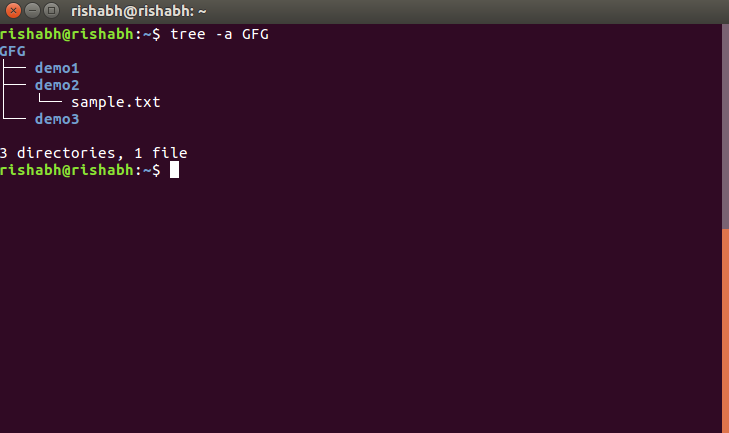

This was my take on how you can print files recursively in Linux. The du command is used to show the storage size of files and when used with the -a option, it will count and print the files recursively.īut I'm also going to use the -c option that will sum the total number of files available in the specified directory: Wrapping Up

Similarly, you can also use the -print option with the find command if you just want to list files recursively: find Directory_name -print Use the du command to list files recursively It will show additional information such as read-write permissions: find Directory_name -ls It will list all the files but not the hidden files. You can recursively search sub-directories with the -ls option of the find command. You'll find me often praising the find command being so extensive with more than 50 options and can also be used for listing files recursively. Once you are done with the installation, you just have to append the filename with the tree command: tree Directory_name Use the find command to list files recursively
Cmd find file in subdirectories install#
If you're on a Debian-based distro, you can use this command for installation: sudo apt install tree Use the tree command to list files recursivelyīy far, this is my favorite utility when it comes to listing files recursively as it gets the output in the easiest way possible.īut it does not come pre-installed in most distributions. Here are some other ways of listing files recursively. the lowercase r is used for the reverse display of ls output.īut wait, you can't expect Linux to have just one solution. ls -R Directory_nameĪs you can see, it shows the contents of every subdirectory one by one.

You can change the default behavior of the ls command to list files recursively by using the -R option. The ls command list the contents of the present directory, but it doesn't show the contents of the subdirectories by default. This is despite the existence of the dedicated dir command. which outputs something like this: 1 username staff 397 1 username staff 16899 1 username staff 9202 Apr 20 12:44 1 username staff 4268 1 username staff 40272 1 username staff 274 1 username staff 3989 Apr 16 22:12 1 username staff 3177 1 username staff 2684 1 username staff 1997 1 username staff 2546 Nov 15 14:47 1 username staff 27695 Nov 23 06:03 1 username staff 7777 1 username staff 413 1 username staff 334 1 username staff 9913 1 username staff 18545 Nov 15 19:44 1 username staff 3702 1 username staff 3266 xmlrpc.The ls command is the default for viewing the contents of a directory. Step 1: Create a batch file and Run as Administrator Step 2: To open Command prompt from current directory to print Step 3: Explanation of the Switches used. Then if you want more information, try this: mac:wordpress username$ ls -la *> file-list-full.txt files-all.txt List contents of directory mac:wordpress username$ ls -m1 *> file-list.txt Probably not possible using the command line. dir /s doesn't match this requirement, because it enters each directory and reports this in separate header, leaving file list as usual. Similar to windowed version of find, where we have last column, displaying location.
Cmd find file in subdirectories windows#
files-recursive.txt Get everything find. I need find a file in Windows under command line, but receive results as a table. List all files, first level folders, and their contents ls * -r List all first-level subdirectories and files file */* Save file list to text file */* *>. Share Improve this answer Follow edited at 12:02 answered at 11:24 pa4080 29. now having collected some useful commands, I want to post ‘em for future reference. 3 Answers Sorted by: 4 You may just need to enable the globstar option of the bash shell then use / instead of : shopt -s globstar rename -n 's/ //' / where -n option is dry run. As I’m not an expert in Terminal, it took awhile to figure out the magic recipe. From time to time I have occasion to generate a list all WordPress files or similar.


 0 kommentar(er)
0 kommentar(er)
